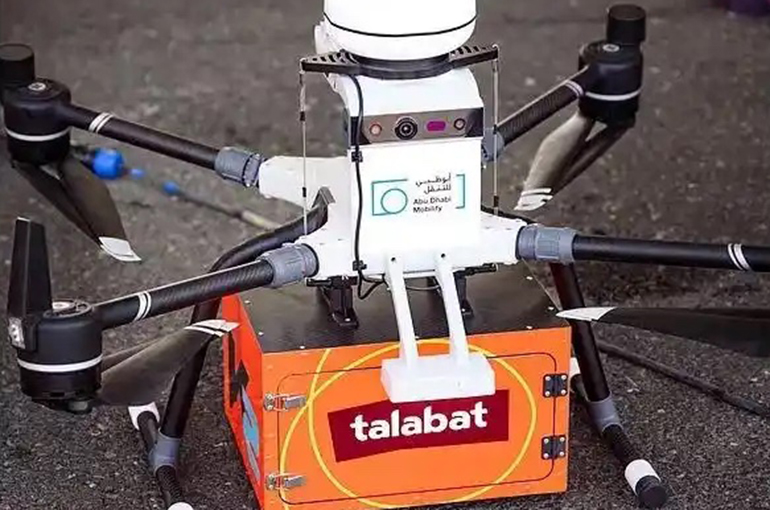 Chinese Drone and eVTOL Firms Seek Middle Eastern Growth at Dubai Airshow
Chinese Drone and eVTOL Firms Seek Middle Eastern Growth at Dubai Airshow(Yicai) Nov. 18 -- Several Chinese drone and electric aircraft manufacturers, including United Aircraft Group, Rongqe Intelligence Technology, and Vertaxi, are leveraging the ongoing Dubai Airshow in the United Arab Emirates to explore market opportunities in the Middle East and lay the groundwork for commercial expansion.
Shenzhen-based United Aircraft is showcasing its Leiying Q20 delivery drone at the major biennial aerospace exhibition and trade show held in Dubai. The Leiying model has a payload capacity of five kilograms and a maximum cruising speed of 23 meters per second. It was designed specifically for the UAE’s high-temperature and high-humidity environment to ensure stable performance during delivery operations, Yicai learned at the expo, which runs to Nov. 21.
United Aircraft chose to collaborate with the local takeout platform Talabat and technology company K2 AeroSpace to advance this drone delivery project, Chairman Tian Gangyin told Yicai. Although the project is not yet in regular operation, the company will continue to expand drone application scenarios in the Middle East while completing the necessary regulatory approval processes, he added.
Guangzhou-based Rongqe displayed three core drone models, including Qiankun, a vertically stacked dual-rotor drone with a maximum payload of 300 kilograms. A staff member said the company has secured overseas orders from South Korea, Malaysia, Angola, and Italy.
Vertaxi, a Shanghai-based manufacturer of electric vertical take-off and landing vehicles, has also entered the Middle Eastern market. The company’s vice president, Sheng Liang, said the development cycle for the low-altitude economy is lengthy. Although large-scale commercial deployment is still some time away, identifying key markets early and optimizing products is crucial to driving future progress.
Thanks to advantages in supply chain management and certification processes, the pricing of electric aircraft in China can be about 30 percent lower than similar products overseas, making them highly competitive, according to a representative from another manufacturer.
However, expanding into overseas markets is not easy for Chinese companies, which must navigate differences in aviation regulatory systems and face challenges related to localized operations, after-sales service, data compliance, and political risks, the representative said.
Editors: Dou Shicong, Emmi Laine